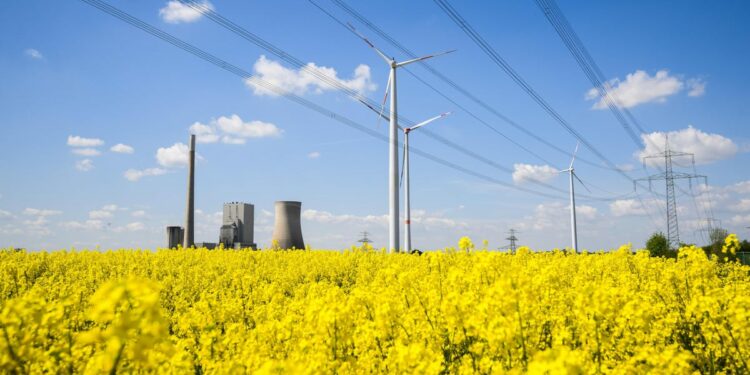Watching the Build Back Better programme flounder in the corridors of Congress is a reminder of how, in the main, the world’s leading economies did not use COVID-19 to decarbonize. Instead, despite the hopeful pledges of politicians during the pandemic, many entrenched their reliance on fossil fuels by giving unqualified subsidies to heavily polluting industries, such as aviation and oil and gas, to protect jobs.
In contrast, the European Union delivered on its promise to put low carbon energy at the heart of the bloc’s post-pandemic economy. The €2 trillion NextGenerationEU package includes huge loans to incentivize the uptake of low carbon energy. As part of this initiative, European Commission President Ursula von der Leyen announced recently that Italy would be receive its first tranche from the fund, a payment of some €21 billion.
In recent weeks, the EU has again shown clarity of thought when faced by another crisis, this time a war on its borders, to further deepen the decarbonization of its energy system whilst at the same time increasing the continent’s energy security.
There are many advocates of an immediate stop to the import of Russian energy, but we view a more gradual, if still dramatic, reduction as more likely. We have examined the impact of the continent stopping the import of Russian gas by 2025 by running it through DNV’s Energy Transition Outlook model. Our model provides insight on how economics, technologies, sectors, geographies, and policies influence each other, and ultimately it gives us year by year data of how the energy transition will unfold.
Europe’s energy mix will decarbonize somewhat more quickly and produce less emissions because of its pivot away from Russian gas. By 2024, we estimate that 34% of Europe’s energy will be produced by renewables and nuclear, which is two percentage points more than our pre-war forecast. Energy emissions will decrease by a similar amount. These changes are lasting and although relatively small (if a 580Mt reduction in carbon dioxide emissions through to 2030 can be regarded as small), they do demonstrate a quick, systemic change in Europe’s energy system does not require a race to the bottom. Or to be precise, it does not require the prolonged use of coal. Coal will play a small role in the very short term as a bridging fuel, but coal prices are also increasing, and it will only replace six percent of the shortfall in gas.
Europe’s ageing nuclear stations are an important component for meeting electricity demand in Europe, providing up for one-third of the shortfall in Russian gas in 2023. Its longer-term place in Europe’s energy mix is likely to be driven more my country specific politics, as seen by its prominence in the UK’s energy strategy, rather than low costs, as nuclear is and will continue to be expensive. The value of nuclear lies outside of price. Proponents of nuclear power argue it provides Europe with more energy security, although the chilling sight of tanks at Chernobyl is a succinct counter to this argument.
With a supply gap to fill and prices at multi-year highs, there is a danger the oil and gas industry lurches towards over-capacity. We forecast that European gas production will increase 12% by 2030, but decarbonization remains the defining feature of the energy transition. The war in Ukraine will weigh on global economic output and further slow globalization. These are both bearish factors for oil demand in particular, which is already being undermined by the growing electrification, not least by electric vehicles.
The main energy independence measure advanced by European politicians – a bigger and faster renewable energy build-out – has a slow initial effect. It will take two years, for example, for this faster build-out to make up 10% of the shortfall resulting from an absence of Russian gas. However, while there may be a small impact, it becomes more meaningful with each passing year. Over a five-year period, we see the renewable build-out matching the 20% increase the EU aims for, and by 2030, solar PV and wind will make up for more than half of the shortfall in natural gas supply.
The limits to the build-out of the relevant gas infrastructure also put constraints on the speed with which Russia can ramp up exports to China. It will not offset its loss of European customers by pivoting East because new pipelines and LN
LN
G terminals take a long time to build.
It can seem glib to talk about climate change when looking at the horrors unfolding in Ukraine. But the IPCC’s recent reports again demonstrated how we are at a “now or never” moment if we are to limit global warming to 1.5 degrees Celsius. A galvanized Europe is demonstrating systemic shifts can happen in a very short amount of time when the political will is there.











